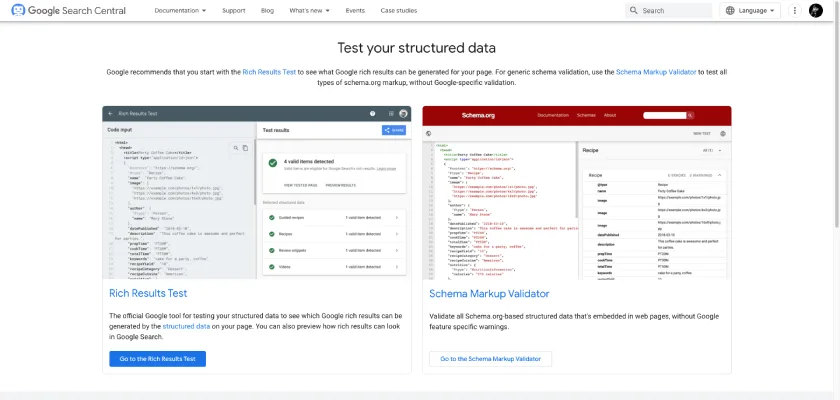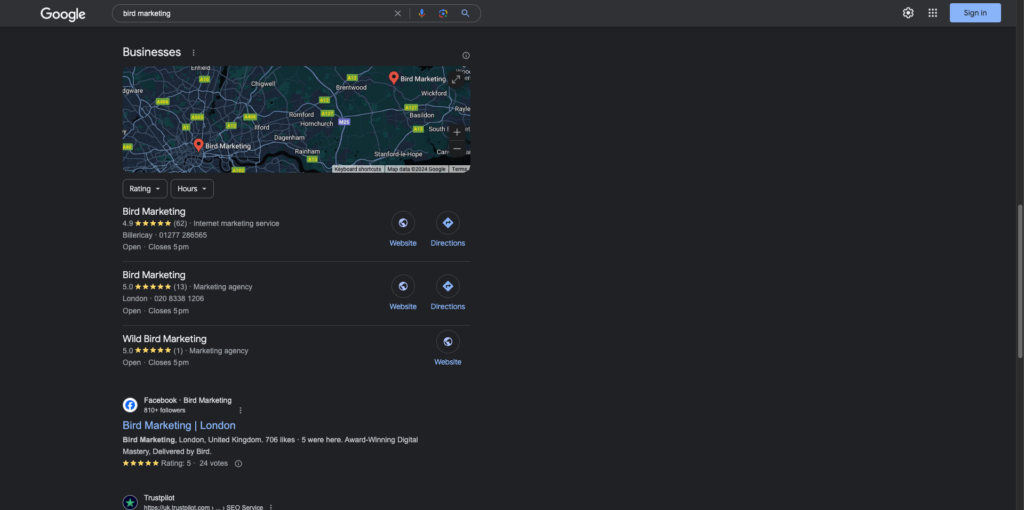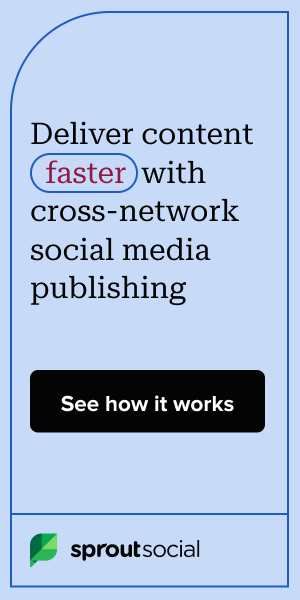
Free E-Commerce Sales Boost: Powerful Strategies You Can Start Using Today
Ready to supercharge your e-commerce sales without spending a penny? Perfect. Today, we’re going to explore some ingenious, cost-effective strategies that can dramatically enhance your online store’s presence and profitability. Forget about those hefty ad budgets; it’s time to harness the power of Google, craft compelling content, and dive into dynamic community engagement, all without costing you anything. Tailored for the sharp and resourceful digital marketer, these tips are your secret sauce for outmanoeuvring the competition and achieving success in the bustling world of e-commerce, wallet firmly in pocket.
This guide is brought to you by Bird Marketing, a specialist digital marketing agency known for its expertise in e-commerce strategies. Our team, driven by a passion for digital excellence, leverages industry insights to empower businesses in their online ventures. At Bird Marketing, we combine innovation with practical solutions to guide businesses towards success in the digital marketplace.
Google Merchant Center Free Listings
Leveraging Google Merchant Center’s Free Listings for E-Commerce Success
As a savvy marketer, you know that in the e-commerce world, visibility is everything. And what’s a better way to increase your online store’s visibility than Google Merchant Center’s free listings? This nifty tool lets you display your products right in Google’s search results, making them more accessible to potential customers. Here’s how to make the most of it:
- Setting Up Your Account: First things first, get your Google Merchant Center account up and running. It’s simple and free.
- Optimizing Your Product Feed: The heart of your listing is the product feed. Make sure your product titles, descriptions, and images are keyword rich and SEO-friendly. Remember, the more appealing and accurate your product information is, the higher your chances of getting those coveted clicks.
- Stay Updated: Keep your product feed fresh. Regular updates on prices, availability, and new additions are key to keeping your listings accurate and trustworthy.
- Highlight Promotions: Got a sale or special promotion? Use your listings to spotlight these deals. It’s an effective way to draw in those looking for a good bargain.
And here’s a pro tip: If you’re using WordPress, streamline this process with the free plugin, Product Feed PRO for WooCommerce. This plugin simplifies creating and managing your product feeds, making it easier to get your products listed and noticed on Google.
By tapping into the potential of Google Merchant Center’s free listings and utilizing efficient tools like Product Feed PRO, you’re not just boosting visibility. You’re strategically positioning your e-commerce business for greater success.
Schema Product Markup for Enhanced Organic Listings
Boosting E-Commerce Listings with Effective Schema Markup

In the digital marketing world, standing out in organic search results is crucial. This is where Schema markup, a type of structured data, becomes a game-changer for your e-commerce site. By providing search engines with detailed information about your products, Schema markup enhances how your listings appear in search results, making them more attractive and informative to potential customers. Here’s how to get started:
- Understanding Schema Markup: This is a code that you add to your website, which helps search engines return richer, more informative results for users. In e-commerce, this includes critical details like price, availability, and customer reviews.
- Easy Implementation on Your Site: To add Schema markup to your HTML, you can use several WordPress plugins. One such plugin, which simplifies this process, is ‘Schema & Structured Data for WP & AMP‘. It’s user-friendly and free, making it ideal for e-commerce sites looking to enhance their visibility.
- Rich Snippets for Enhanced Visibility: Schema markup enables your product listings to feature rich snippets in search results, like star ratings, pricing, and availability. These snippets make your listings more eye-catching and can significantly increase your click-through rates.
- Keeping It Updated: Ensure your Schema markup is always current, especially for changes in pricing or availability. Regularly test your markup using tools like Google’s Rich Results Test to verify correct implementation.
By implementing Schema markup, you’re not just improving the appearance of your listings in search results; you’re taking a strategic step towards better engagement and higher sales.
Check out these great tools for testing your schema markup online.
Leveraging Social Media Platforms
Harnessing the Power of Social Media for E-Commerce Growth
Social media isn’t just about likes and shares; it’s a potent tool for driving e-commerce sales. With the right approach, you can use these platforms to significantly boost your online store’s visibility and engagement, all without any financial investment. Here’s how to make social media work for your e-commerce business:
- Choose the Right Platforms: Not all social platforms are equal. Identify where your target audience hangs out the most – be it Instagram, Facebook, Twitter, or Pinterest – and focus your efforts there.
- Engaging Content is Key: Create content that resonates with your audience. This could be anything from product highlights, behind-the-scenes glimpses, customer stories, to useful tips related to your products.
- Consistent Interaction: Regularly post and engage with your followers. Responding to comments, running polls, and hosting live Q&A sessions are great ways to keep the conversation going.
- Utilize User-Generated Content: Encourage your customers to share their experiences with your products. Reposting customer photos or reviews not only provides social proof but also builds community.
- Hashtag Smartly: Use relevant hashtags to increase the visibility of your posts. Research and use a mix of popular and niche-specific hashtags related to your products and industry. Ensure you find the
- Track and Adjust: Utilize social media analytics tools provided by these platforms to track the performance of your posts. Use these insights to tweak your strategy for better engagement and reach.
By effectively leveraging social media, you can create a strong online presence for your e-commerce business, fostering community, engagement, and ultimately, driving sales.
Content Marketing and SEO
Mastering Content Marketing and SEO for E-Commerce Excellence
Content marketing and search engine optimization (SEO) are the twin pillars supporting a successful e-commerce strategy. By creating valuable content and optimizing it for search engines, you can attract more organic traffic to your site, engaging and converting visitors into customers. Here’s how to make the most of content marketing and SEO:
- Keyword Research: Begin with thorough keyword research to understand what your potential customers are searching for. Tools like Google Keyword Planner can help identify relevant keywords for your products and industry.
- Quality Content Creation: Create content that adds value to your audience. This could be informative blog posts, how-to guides, product reviews, or even engaging videos. Make sure your content is relevant, informative, and aligned with your audience’s interests.
- SEO Optimization: Optimize your content with the keywords you’ve researched. This includes using keywords in titles, headings, meta descriptions, and throughout the content. Remember, the goal is to be informative and natural – avoid keyword stuffing.
- Regular Updates: Keep your content fresh and up-to-date. Regularly updating your blog or website not only helps with SEO but also keeps your audience engaged.
- Link Building: Quality backlinks from reputable sites can significantly boost your SEO. Consider guest blogging, collaborations, and creating shareable content to attract links.
- Monitor Performance: Use tools like Google Analytics to track your content’s performance. Understand what works and refine your strategy accordingly.
Content marketing and SEO are not just about driving traffic; they’re about attracting the right audience and providing them with value, which in turn can lead to increased sales and customer loyalty.
Customer Reviews and Testimonials
Leveraging Customer Reviews and Testimonials to Boost E-Commerce Sales

Customer reviews and testimonials are incredibly powerful in the e-commerce landscape. They provide social proof, build trust, and can significantly influence buying decisions. Here’s how you can effectively use them to enhance your e-commerce business:
- Encourage Reviews: Actively encourage your customers to leave reviews. This could be through follow-up emails post-purchase or incentives for leaving a review. Use platforms like Trustpilot or Google My Business which have free offerings.
- Showcase Reviews on Your Site: Make sure that customer reviews are prominently displayed on your product pages. This can include a dedicated review section or even highlighting featured reviews.
- Respond to Reviews: Engage with your customers by responding to their reviews, both positive and negative. This shows that you value customer feedback and are committed to improving their experience.
- Use Testimonials in Marketing: Incorporate strong customer testimonials into your marketing materials. This can be on your website, in social media posts, or in email campaigns.
- Video Testimonials: If possible, get video testimonials from satisfied customers. Videos can be more engaging and convincing than written testimonials.
- Leverage Reviews for SEO: Reviews can also contribute to your SEO efforts. Encourage the use of keywords in the reviews, and feature them in your site’s content where relevant.
By effectively utilizing customer reviews and testimonials, you can enhance credibility, provide social proof, and ultimately drive more sales for your e-commerce store.
Enhanced Analytics for E-Commerce: Integrating Google Tag Manager
Optimizing E-Commerce Tracking with Google Tag Manager and Google Analytics
To further refine your e-commerce analytics strategy, integrating Google Tag Manager (GTM) alongside Google Analytics is a game-changer. GTM simplifies the process of implementing tracking codes and analytics on your website without needing to modify the code. Here’s how to use it effectively:
- Implement Google Tag Manager: Set up Google Tag Manager to manage your tracking codes in one place. This tool allows you to add and update your own tags for conversion tracking, site analytics, remarketing, and more.
- Seamless Integration with Google Analytics: Use GTM to integrate with Google Analytics for detailed e-commerce tracking. This setup lets you track specific customer interactions like product views, additions to cart, and purchases.
- Use the Right Plugin for WordPress: For WordPress users, a great tool to facilitate this integration is the ‘Google Tag Manager for WordPress by Thomas Geiger’. This free plugin offers an easy way to incorporate GTM into your WordPress site, enabling efficient tracking setup, data layer pushes and e-commerce event management.
- Detailed Customer Journey Analysis: With GTM and Google Analytics, gain deeper insights into the customer journey. Track the effectiveness of your marketing campaigns and understand how users interact with your site.
- Data-Driven Decisions: Leverage the combined power of GTM and Google Analytics to make informed decisions. Analyze the data to optimize your marketing strategies, improve user experience, and boost conversion rates.
Integrating Google Tag Manager with Google Analytics provides a robust framework for tracking and analyzing e-commerce activities, offering valuable insights to enhance your digital marketing efforts.
Community Engagement
Building and Leveraging Community for E-Commerce Success
In the digital era, building a community around your e-commerce brand can be a game-changer. Engaging with a community not only drives brand loyalty but can also significantly boost sales. Here’s how to effectively build and leverage your online community:
- Identify Your Community Platforms: Determine where your target audience congregates online. This could be on social media platforms, forums, or niche-specific online communities.
- Engage Actively and Authentically: Regularly participate in these communities. Post relevant content, answer questions, and engage in discussions. Authentic engagement builds trust and credibility.
- Create Exclusive Offers: Provide special offers or early access to new products for your community members. This exclusivity fosters a sense of belonging and appreciation.
- Gather Feedback and Ideas: Use your community as a resource for feedback on your products and services. This can guide improvements and innovations.
- Host Events or Contests: Organize online events, webinars, or contests that resonate with your community. These activities can increase engagement and bring more attention to your brand.
- Share Customer Stories: Highlight customer experiences and stories. This not only provides social proof but also makes your customers feel valued and seen.
- Collaborate with Community Influencers: Partner with influencers or prominent community members. Their endorsement can amplify your brand’s reach and credibility.
By nurturing and engaging with a community, you create a loyal customer base that not only buys your products but also advocates for your brand, driving organic growth and sales.
In the competitive e-commerce landscape, understanding and managing your costs can be just as important as driving sales. The ‘Cost of Goods Sold (COGS): Cost & Profit Calculator for WooCommerce’ is a powerful tool that aids in this crucial aspect of business management. Here’s how it can benefit your online store:
- Accurate Cost Tracking: The plugin allows you to easily track the cost of goods sold, a critical metric for any e-commerce business. By knowing the cost of your products, you can make informed pricing decisions and better understand your margins.
- Profit Calculation: It automatically calculates your profits for each product, order, and overall store performance. This real-time data is vital for adjusting strategies and ensuring profitability.
- Inventory Valuation: Stay on top of your inventory with current and historical data on the value of your stock. This helps in making effective purchasing and sales decisions.
- Insights for Growth: With clear visibility into your costs and profits, you can identify which products are your top performers and which ones may need a pricing strategy revamp.
- Seamless Integration with WooCommerce: As a WooCommerce plugin, it integrates seamlessly with your online store, making the process of managing costs and profits straightforward and efficient.
Implementing the ‘Cost of Goods Sold (COGS): Cost & Profit Calculator for WooCommerce’ plugin is a step towards smarter financial management. It provides the insights needed to balance costs with revenue, ensuring your e-commerce business remains profitable and sustainable.
Conclusion
As we’ve explored in this journey, driving sales in the e-commerce world doesn’t always require a hefty budget. By smartly utilizing tools like Google Merchant Center, optimizing with Schema markup, engaging on social media, creating compelling content, harnessing customer reviews, analyzing data, and building a vibrant community, you can significantly elevate your online store’s performance. These strategies, rooted in understanding and connecting with your audience, not only aim to boost sales but also build a lasting relationship with your customers.
Remember, the key to success in the digital marketplace is a blend of visibility, engagement, and trust. Each of these free methods contributes to this blend, providing you with a toolkit to not just compete, but thrive in the ever-evolving e-commerce landscape. So, take these insights, apply them with creativity and consistency, and watch as your e-commerce store reaches new heights of success — all without stretching your budget.
As you implement these strategies, keep an eye on the evolving digital trends and adapt accordingly. The world of e-commerce is dynamic, and staying agile and informed will be your best strategy for continued growth and success.
























